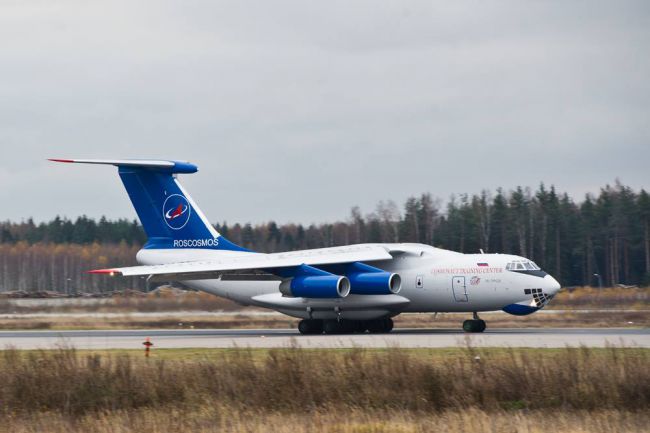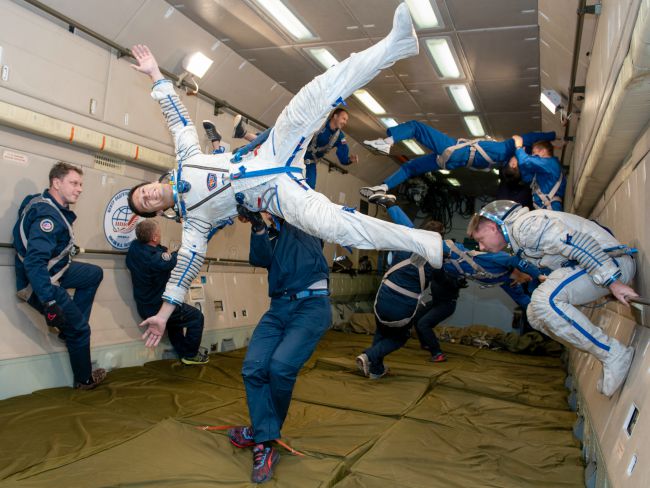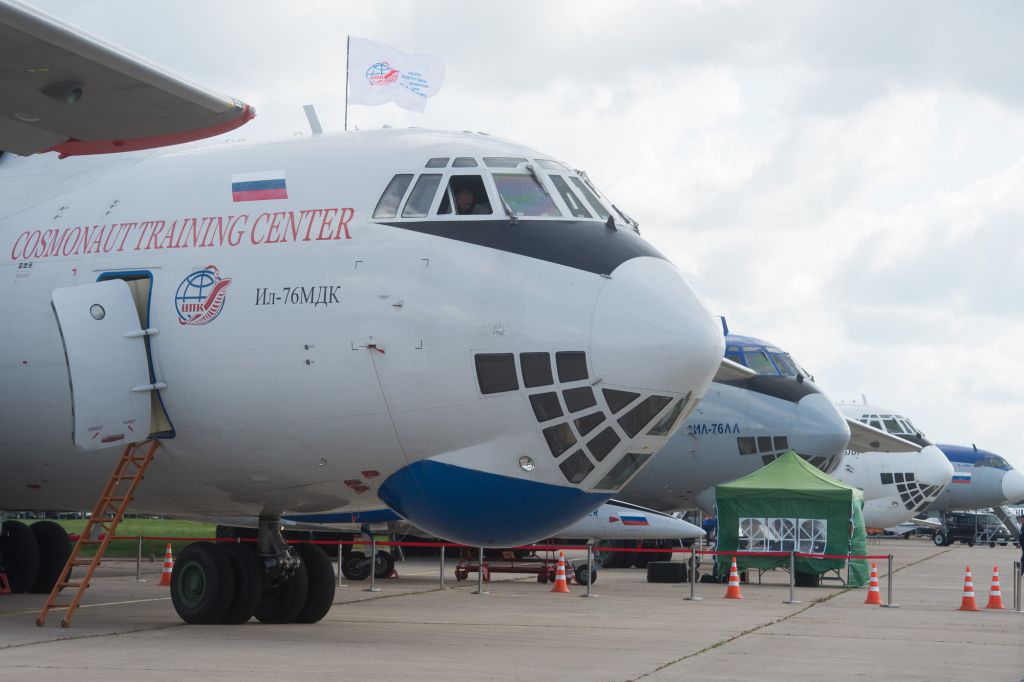
Photo: Gagarin Research & Test Cosmonaut Training Center
On 6 August, 1988, a unique Il-76MDK plane which enabled to simulate short-term zero-gravity state on Earth made its first flight.
Space Il’s are used to prepare cosmonauts, carry out medical experiments, and test instrument and devices in weightlessness conditions. When being aboard such aircraft, you can feel yourself on the Moon or Mars – the planes make it possible to simulate lunar and Martian gravity conditions. The history of these unusual aircraft is described below.
Cosmonauts’ favourite simulator
When preparing for the first human space flight, it was important for researchers to know how the state of weightlessness influenced the human body. The first Soviet cosmonauts were trained using MiG-15 fighter, but it was impossible to feel weightless completely when being in the pilot seat. Therefore in 1960, the first flying test-bench – Tu-104AK – was developed for such experiments on the basis of Tu-104 civil jet aircraft. Both people and various equipment to be used in space underwent weightlessness testing using this plane.

As time passed, the Tu-104AK body dimensions did not satisfy the demands of the Star City any longer and a larger flying test-bench was required. The history of a new plane with the space index began from the day when cosmonaut Georgy Beregovoy visited the assembly shop of the second Il-76 prototype in 1970. The cosmonaut highly appreciated the roomy cargo hold of the transport aircraft and it was decided to use it as a basis for Il-76K flying test-bench as early as in 1972.
Parabolic flights
Let’s say a few words about a zero-gravity flight concept. In order to produce the required effect, the plane shall at first make a zoom climb – steep climb at a maximum speed, and then proceed to the same steep dive. A vertical zero load is created in the top flight point and zero gravity is “actuated” on the 25th-28th second. Such maneuver is also known as the Kepler's parabolic flight. The crew usually makes about ten parabolas during one flight, and a future cosmonaut gains the skill during 10 to 12 flights on average.
The plane experiences high loads when performing such specific operations. Therefore, it was necessary to include them in the new Il airframe design. In addition, all equipment had to be reworked to ensure adequate performance in weightlessness conditions. Also, a spin-recovery parachute was initially added to Il-76K, since a spin risk was high when sliding down.
A test crew, including a supervisor, engineer and two doctors, was in the cargo hold front. The hold was improved to ensure the safety of cosmonauts. It was covered with soft materials and furnished with additional lighting and side handrails.

All these measures were successfully implemented and Il-76K made its first flight on 2 August, 1981. S.G.Bliznyuk who performed all further aircraft tests was the plane commander. Lead engineer V.V. Smirnov from Ilyushin Experimental Design Bureau calculated the parabola path for the space Il, and this enabled to increase the zero-gravity stage from 15 to 25 seconds compared with Tu-104AK. It is interesting to note that the aircraft life was approximately ten times shorter as a result of high-load flights.
A total of three Il-76K planes were made and used to prepare cosmonauts during almost a decade. They were superseded by Il-76MDK (modified long-range space aircraft) designed on the basis of the upgraded mass-produced Il-76MD transport aircraft. Il-76MDK made its first flight on 6 August, 1988. This version also included three planes which are still used in Roscosmos fleet to prepare cosmonauts and no substitute is required so far.

